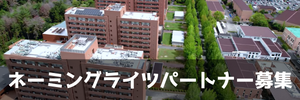(English announcement can be found in the latter half of this notice.)
広島大学バイオマスプロジェクト研究センターと中国地域バイオマス利用研究会の共催で広島大学バイオマスイブニングセミナーを開催しています。バイオマスに関する基本的な考え方から最先端の情報までをカバーして、この地域におけるバイオマスの活動に資することを目的とするものです。第77回を以下の日程で開催しますので、ご参集下さい。
日時
2019年9月9日(月)16:20~17:50
会場
広島大学東広島キャンパス工学部110講義室
広島大学 東広島キャンパス
https://www.hiroshima-u.ac.jp/access/higashihiroshimacampus
工学部 建物配置図
www.hiroshima-u.ac.jp/eng/access/building
工学部 講義室配置図
www.hiroshima-u.ac.jp/eng/access/lectureroom
プログラム
講演: 広島大学大学院工学研究科 D3 Apip AMRULLAH
「リン回収を伴う下水汚泥の超臨界水ガス化」
今日、石炭、石油、天然ガスに次いで4番目に大きいエネルギー資源であるバイオマスに関する研究は、気候変動を緩和するための努力のために多大な注目を集めています。最も有望なバイオマス資源の1つは、低コストの材料で大量に入手可能な下水汚泥です。また、下水汚泥には、窒素、リン以外に、タンパク質、脂質、炭水化物、リグニンなどの有機物が多く含まれています。そして、燃焼、熱分解、および超臨界水ガス化(SCWG)を介して下水汚泥を有用な二次エネルギーに変換するための様々な方法が試みられてきました。しかしながら、下水汚泥は高い含水量(約85重量%)を有し、燃焼および熱分解が適用されるときには高い乾燥コストがかかります。一方、SCWGはバイオマスの予備乾燥が不要であり、数分以内に水中でガス化反応が起こるため、下水汚泥などの含水率の高いバイオマスを含むバイオマスの変換に適しています。 現在、SCWGを用いた下水汚泥の二次エネルギーへの転換に関する研究は様々な機関で行われていますが、連続反応器を用いた下水汚泥のSCWGに対する反応速度論の詳細な解明と同様に、リン回収と組み合わせたガス発生に関する包括的な研究はありません。下水汚泥を連続流通反応器を用いて超臨界条件下でガス化しました。反応器は、長さ12m、内径2.17mmのSS316鋼管製でした。反応圧力を25MPaに固定しながら、温度(500〜600℃)および滞留時間(5〜60秒)を変えることによって実験を行いました。その結果、50秒後に600°Cで0.73という高い炭素ガス化効率(CGE)が達成されました。また、有機リンは10秒という短い滞留時間で急速に無機リンに変換されました。下水汚泥には多量のリンが含まれており、亜臨界および超臨界水ガス化がリンを後に残す可能性があることを考慮すると、水熱条件下でのリンの挙動およびその速度論に関する研究は非常に重要です。 25MPaの一定圧力で連続反応器を使用して、水熱条件下での下水汚泥ガス化を300〜600℃の温度範囲および5〜30秒の反応時間で実施しました。亜臨界条件下では、有機リンの収率は減少しますが、無機リンの収率は増加します。明らかに、有機リンは水熱条件下で無機リンに変換されます。
最後に、下水汚泥の水熱処理中のセル構造破壊とその動力学を研究しました。水熱処理は高温を必要とし、それは下水汚泥の形態学的構造に影響するであろうという事実のためです。これは、下水汚泥の形態構造ならびに細胞内の有機化合物の放出およびその速度論的挙動に対する様々な温度での水熱処理の効果を調査する最初の包括的な研究です。下水汚泥の総有機物含有量(TOC)と形態に及ぼす水熱温度(130-250°C)の影響を5MPaで10分の滞留時間で調べました。 HTは下水汚泥セル構造を損傷し、それによってセル内容物を放出し、その結果液相中のTOCを増加させます。アレニウス方程式を用いることによって、下水汚泥細胞の分解のための事前指数因子と活性化エネルギーを初めて首尾よく決定しました。
講演:広島大学大学院統合生命科学研究科 D2 羅 宮臨風
「低温菌Shewanella livingstonesis Ac10における熱透過全細胞触媒の開発」
工業的に使用される精製酵素と比較して、全細胞生体触媒は、容易な調製および補酵素の回収の容易さを含む多数の利点を有します。しかしながら、細胞膜は時々基質の細胞質内拡散を妨げ、不十分な生体内変換効率をもたらします。本研究は、Shewanella livingstonensis Ac10を用いて、低温菌における生体触媒を作成することを目的としました。低温菌の細胞膜は非常に柔軟であり、その透過性は中程度の温度での熱処理によって向上することができます。低温菌生体触媒の効率は、45℃で15分間の熱処理によって向上し、生産性は9倍以上に向上しました。
講演:広島大学大学院工学研究科 D3 Rahmat Iman MAINIL
「超臨界水ガス化による椰子油ミルミル廃液(POME)からのリンの連続生産」
インドネシアでの粗パーム油の生産量の増加は、廃液の深刻な汚染を伴います。適切な処理が行われないと、パーム油工場廃水(POME)と呼ばれるこの廃棄物は環境に有害です。従来、POMEをエネルギー源および貴重な栄養素として利用するために生化学的技術が使用されていました。しかしながら、この方法は大きな反応面積と長い反応時間を必要とします。超臨界水ガス化(SCWG)は、この問題を克服するための潜在的な技術です。ここでは、生のPOMEに含まれる有機物から無機リンを生成するためにSCWGが使用されました。この研究では連続反応器を採用し、SCWG中のPOMEからのリン変換の挙動を明らかにするために一連の実験を開発しました。液相中で有機燐が無機燐に転化され、反応器中に無機燐の沈殿がいくらか観察されました。この転化率は温度と共に増加しました。この挙動の議論は、数学モデルと実験結果の比較に基づいて開発されました。
司会・解説:広島大学大学院工学研究科 教授 松村 幸彦
なお、18:00より意見交換会(参加費 800円)を開催します。ご都合の付く方はこちらにもご参加下さい。
The 77th Hiroshima University Biomass Evening Seminar
(The 56th Hiroshima University ACE Seminar)
Biomass Project Research Center, Hiroshima University, and HOSTY Association are co-organizing the Hiroshima University Biomass Evening Seminar. This seminar covers topics from the fundamentals of biomass to the latest information so that it can contribute the activities on biomass in this district. The 77th seminar will be held as follows. Please join.
Date & Time
Mon.9 Sep., 2019 16:20-17:50
Place
Engineering 110 Lecture Room, Higashi-Hiroshima Campus, Hiroshima University
Higashi Hiroshima Campus, Hiroshima University
https://www.hiroshima-u.ac.jp/en/access/higashihiroshimacampus
School of Engineering Buildiing map
https://www.hiroshima-u.ac.jp/en/access/higashihiroshimacampus/aca_7
School of Engineering Lecture room map
www.hiroshima-u.ac.jp/eng/access/lectureroom
Program
Lecture: Apip AMRULLAH
D3 Graduate School of Engineering, Hiroshima University
“Supercritical water gasification of sewage sludge with phosphorus recovery”
Nowadays, researches on biomass, which is the fourth largest energy resource after coal, oil, and natural gas, have attracted a tremendous attention due to the effort to mitigate climate change. One of the most promising biomass sources is sewage sludge as it is a low-cost material and available in a large amount. Moreover, sewage sludge contains a large amount of organic matters such as proteins, lipids, carbohydrates, and lignin as well as nitrogen, and phosphorus. Various methods have been approached to convert sewage sludge into useful secondary energy via combustion, pyrolysis, and supercritical water gasification (SCWG). However, sewage sludge has high moisture content (approximately 85 wt%), leading to high drying costs when combustion and pyrolysis are applied. On the other hand, SCWG is appropriate for converting biomass containing high-moisture biomass such as sewage sludge, as pre-drying of biomass is not required, and the gasification reaction takes place in water within a few minutes. Even though studies on the conversion of sewage sludge into secondary energy using SCWG have been conducted, there are no comprehensive studies on gas generation combined with phosphorus recovery as well as detailed elucidation of the reaction kinetics for the SCWG of sewage sludge using a continuous reactor. Sewage sludge was gasified under supercritical conditions by using a continuous flow reactor. The reactor was made of SS316 steel tubing with a length of 12 m and the inner diameter of 2.17 mm. Experiments were conducted by varying the temperature (500−600 °C) and residence time (5−60 s), while the reaction pressure was fixed at 25 MPa. The results showed that a carbon gasification efficiency (CGE) as high as 0.73 was achieved at 600 °C after 50 s. Organic phosphorus was rapidly converted into inorganic phosphorus at short residence time of 10 s. Since sewage sludge contains a high amount of phosphorus and considering that sub- and supercritical water gasification could leave the phosphorus behind, the study about phosphorus behavior and its kinetics under hydrothermal condition is crucial. Using a continuous reactor at a fixed pressure of 25 MPa, sewage sludge gasification under hydrothermal condition was performed at temperature range of 300−600 °C and reaction time 5−30 s. Under subcritical condition, the yield of organic phosphorus decreases, whereas the yield of inorganic phosphorus increases. Apparently, organic phosphorus is converted to inorganic phosphorus under the hydrothermal condition.
Finally, cell structure destruction and its kinetics during hydrothermal treatment of sewage sludge was studied due to the fact that hydrothermal treatment requires high temperature, which will affect the morphological structure of sewage sludge. This is the first comprehensive studies to investigate the effect of hydrothermal treatment at various temperatures on the morphological structure of sewage sludge as well as the release of organic compounds inside the cells and its kinetics behavior. The effect of hydrothermal temperature (130−250 °C) on the total organic content (TOC) and morphology of sewage sludge was investigated for a residence time of 10 min under 5 MPa. HT damaged the sewage sludge cell structure, thereby releasing the cell contents and consequently increasing the TOC in the liquid phase. By using the Arrhenius equation, the pre-exponential factor and activation energy were successfully determined for the first time for the degradation of sewage sludge cells.
Lecture: Luo GONGLINFENG
D2 Graduate School of Integrated Sciences for Life, Hiroshima University
“Development of heat-permeabilized whole-cell catalyst based on pyschrophile Shewanella livingstonesis Ac10”
Compared to purified industrially used enzymes, whole-cell biocatalysts have numerous advantages including easy preparation and the ease of coenzyme recovery. However, the cell membrane sometimes hinders cytoplasmic diffusion of the substrate, leading to poor biotransformation efficiency. This study aimed to generate a psychrophile-based simple biocatalyst using Shewanella livingstonensis Ac10. The cell membrane of psychrophiles is highly flexible and its permeability can be improved via heat treatment at a moderate temperature. The efficiency of the biocatalyst was increased via heat treatment at 45°C for 15 min and the productivity of the heat-treated cells was increased over 9-fold.
Lecture: Rahmat Iman MAINIL
D3 Graduate School of Engineering, Hiroshima University
“CONTINUOUS PRODUCTION OF PHOSPHORUS FROM PALM OIL MILL EFFLUENT (POME) BY SUPERCRITICAL WATER GASIFICATION”
Increasing production of crude palm oil in Indonesia comes along with severe pollution of liquid waste. This waste called palm oil mill effluent (POME) is harmful for environment if no proper handling is carried out. Conventionally, biochemical technologies were employed to utilize POME as source of energy and valuable nutrients. However this method requires large treatment area as well as long reaction time. Supercritical water gasification (SCWG) is a potential technology to overcome this problem. Here, SCWG was used to produce inorganic phosphorus from organics contained in raw POME. A continuous reactor was employed in this study and a set of experiments were developed to spotlight the behavior of phosphorus conversion from POME in SCWG. It was found that organic phosphorus was converted into inorganic phosphorus in the liquid phase, in which some precipitation of the inorganic phosphorus was observed in the reactor. The rate of this conversion increased with temperature. The discussions of this behavior were developed based on comparison of mathematical model and experimental results.
Chair & Commentary: Yukihiko MATSUMURA
Professor, Graduate School of Engineering, Hiroshima University
We will hold the discussion meeting from 18:00 (800 JPY needed). Join this meeting too, if you are available.


 Home
Home









